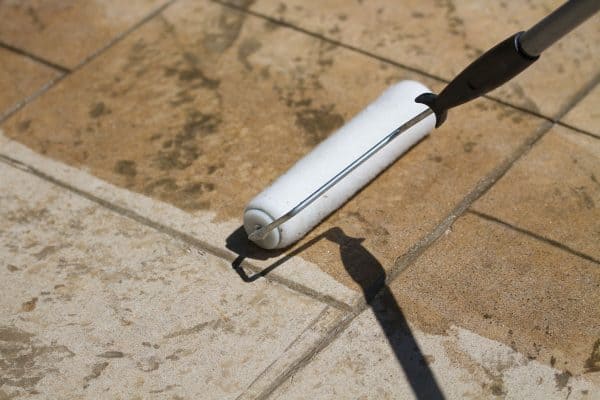Disclosure: We may get commissions for purchases made through links in this post.
Poured concrete and pavers are two of the most common materials used for hardscaping. When choosing between the two, it helps a lot when you're equipped with the right information to make a wise decision. We've researched the pros and cons of poured concrete and pavers to arrive at a conclusion.
Pavers are better than poured concrete. They are more cost-effective because of their durability, ease of maintenance and repair, and allow better water drainage. They also add to the beauty and value of a home.
Keep on reading to know more about poured concrete and pavers - their advantages and disadvantages and which one will suit your needs. Let's get down to it!
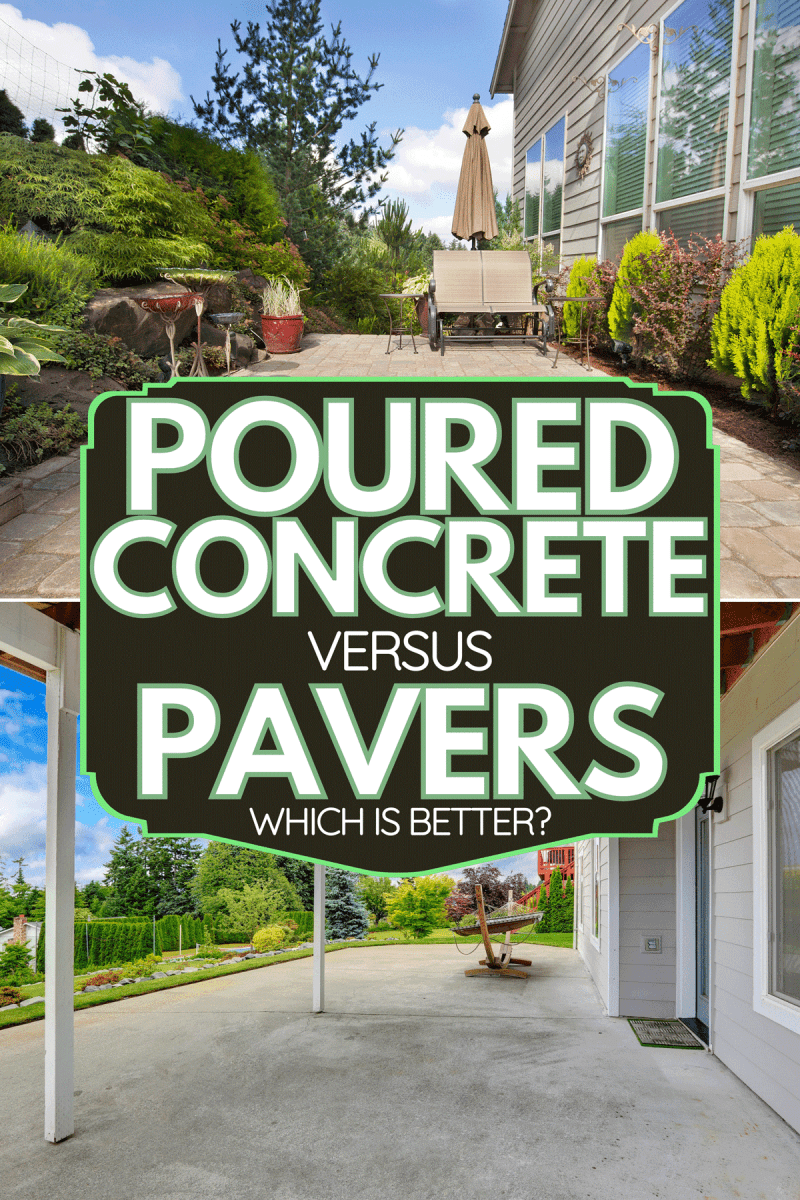
Is Concrete Better Than Pavers?
There's a lot to gain from improving your patio, driveway, or walkway. Aside from adding value to your house and enhancing your curb appeal, you get more out of your outdoor space. You're able to optimize and maximize your yard to extend your living space outside of your home.
But before you get started with the whole landscaping endeavor, you would need to decide on the materials that you would use for this home improvement project. As mentioned earlier, poured concrete and pavers are the most popular options.
Poured concrete is wet concrete that has been mixed and cured onsite to create a single huge slab.
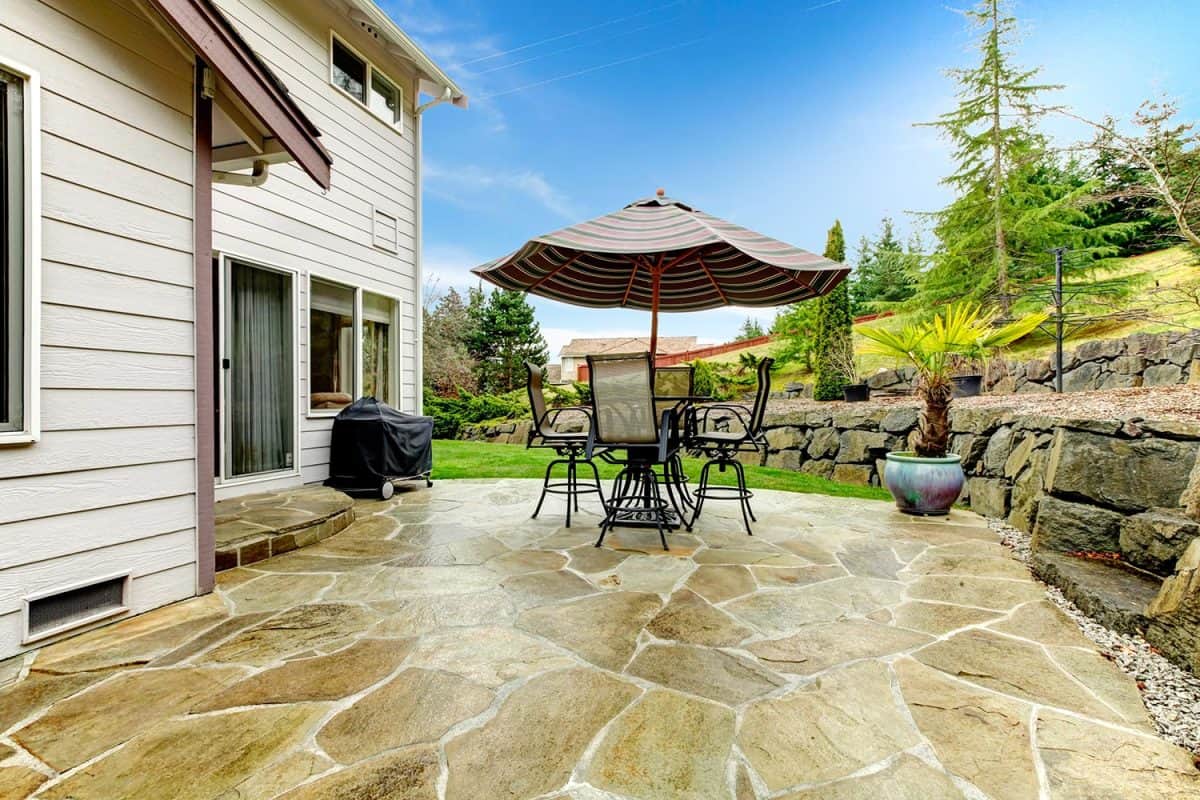
On the other hand, pavers are dry and they come in individual units of various sizes, shapes, and colors. They can be made of concrete, natural stones, or brick. They are ready for installation once purchased from your supplier.
These two have different qualities that you need to carefully consider so that you can choose the best material for your hardscaping.
Factors to Consider
Here are the factors that'll influence your choice between poured concrete and pavers.
Durability
Homeowners want the best value for their money. The more durable the material is, the more you'll be convinced that you got your money's worth since it'll last longer.
Both poured concrete and pavers are strong materials that stand up well to pressure and different weather conditions. When it comes to compressive strength, pavers can withstand a pressure of 8,000 psi while poured concrete can only endure between 2,500 and 3,000 psi.
This is mainly because pavers are denser than concrete slabs. As a consequence, concrete will absorb more water, and when the temperature drops, the water underneath can freeze. This would lead to cracking on the concrete surface.
Since pavers are denser, they won't absorb water. Rather, they'll displace it elsewhere. This means that they aren't susceptible to cracking. There's also plenty of room for expansion and contraction because of the interlocking pavement and sand joints between them.
Installation
Ease of installation plays a huge factor in the labor cost of this project. The easier it is to install, the faster the job will be done and the lower you have to pay for this service.
Poured concrete presents a challenge when transporting this material to the construction site. You would have to rent a special vehicle and ensure that the quality is not altered. This adds to the initial cost. Upon delivery, it is mixed onsite.
Prior to this, the outdoor space should have already been excavated and graded properly. The next steps are preparing the foundation, setting the forms, before you pour the concrete.
Then, you have to wait for the concrete to dry and cure. This usually takes several days. It is important to make sure that no one can access this space for the time being so as not to damage the pavement.
On the other hand, pavers come ready to be used for installation. However, it requires a more complex process.
After excavation and grading, there are the sub-base compaction, geo-textile fiber installation, base preparation, and base compaction.
After these steps, the sand is prepared before laying the pavers. Then you need to cut the borders, prepare the bond beam, compact the stones, before finally sealing the pavers.
Upon completion, pavers don't need any curing time. This means that they are ready for use right away.
Beauty
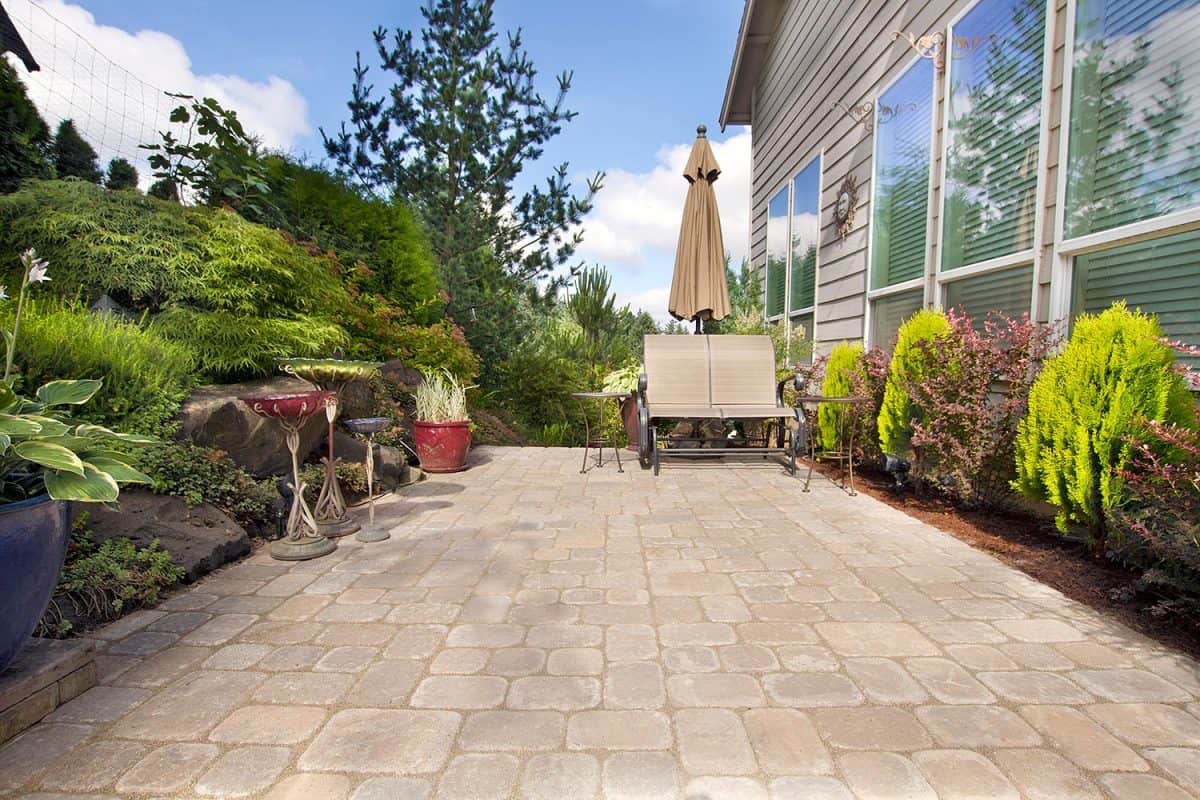
Once the hardscape has been installed, it should enhance the look of your outdoor space and help you achieve a great first impression among guests and passersby.
Plain poured concrete doesn't offer much when it comes to beauty. But homeowners can choose stamped concrete so that they have different designs and textures to choose from. It can resemble the look of tiles, brick, or stone. Concrete can also be polished and given a glossy finish to enhance its look.
Meanwhile, pavers offer various design options. The usual colors are gray, red, brown, and tan. You can make them look cobbled, rustic, smooth, or textured to fit your preference.
Maintenance and Repairs
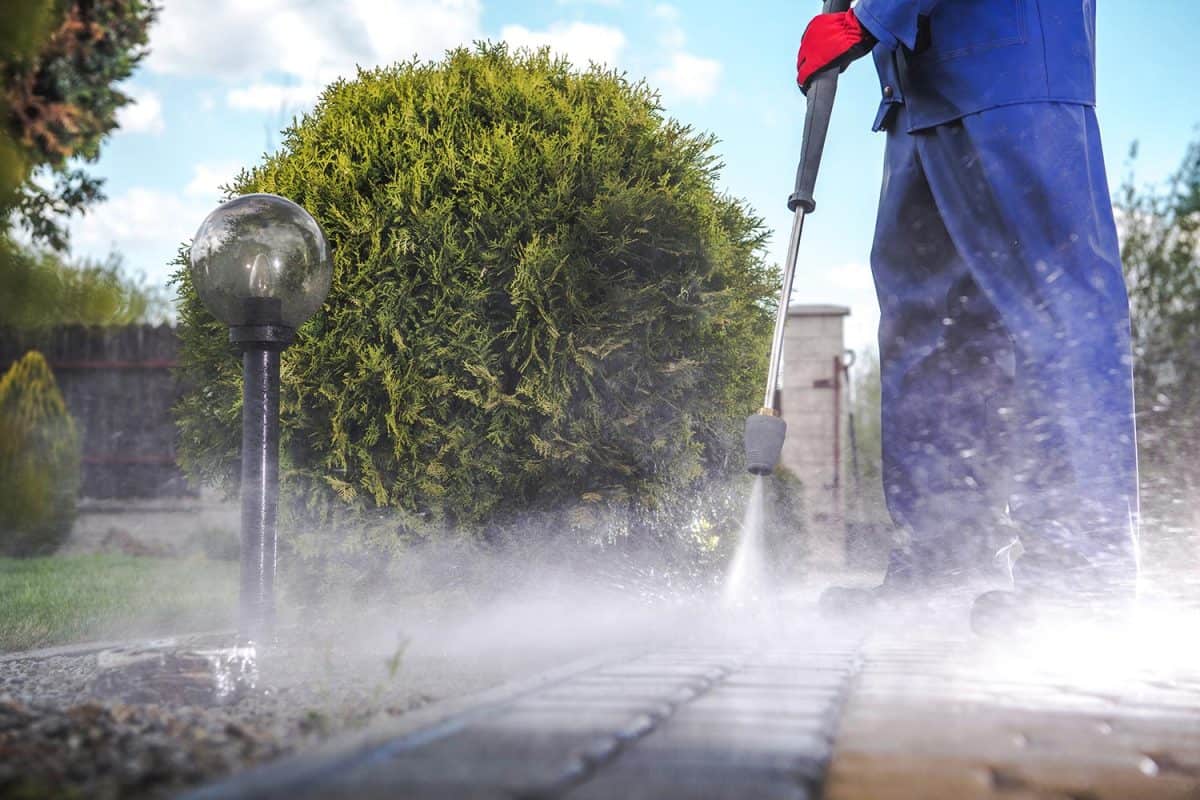
Ease of maintenance will help you retain the look of your hardscape with minimal effort. You should also consider how repairs will be done when the need arises - the length of time that you'll be inconvenienced because you won't be able to use your outdoor space and the actual cost of repair.
Both types of paving materials are easy to maintain. You can use a broom to remove the dirt and spot clean with a brush to remove stains.
When it comes to repairing concrete, you would need to patch the affected area. But this will result in differences in the appearance of the old and new concrete. Sometimes, you would need to replace the whole concrete slab when the cracks are massive.
Pavers, on the other hand, are much easier to repair because you can just remove the pieces that have been damaged and replace them with new ones. This won't affect the overall look of your pavement.
Drainage
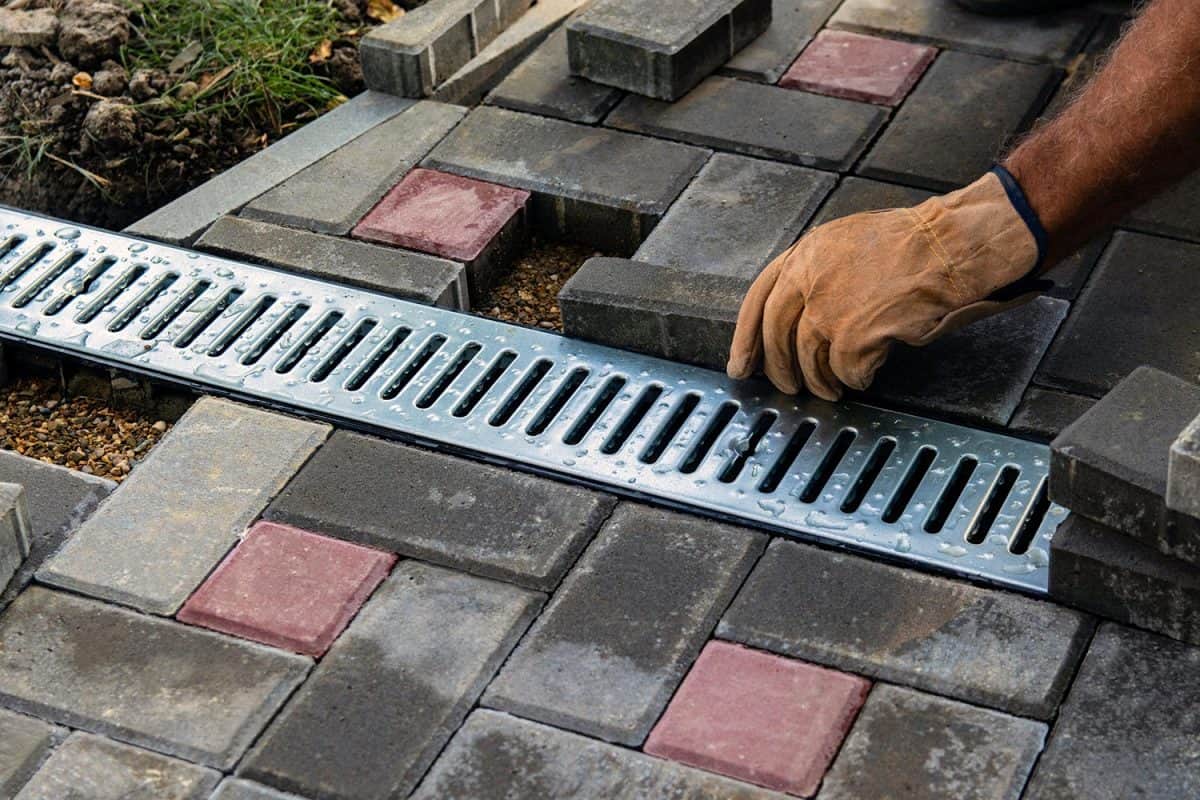
This refers to the material's ability to displace water so that it won't accumulate in a certain spot and cause flooding and damage.
As discussed earlier, pavers are denser so they don't absorb water and moisture. They are made to displace water so that it can pass through designated drainage systems and avoid flooding.
Poured concrete is porous so it'll absorb water. The problem arises when it reaches its maximum capacity to hold water. It will cause puddles on certain spots.
But there is a way to prevent flooding when you use a concrete slab. The contractor should ensure proper grading upon installation so that the water will naturally flow towards your drainage system.
Cost
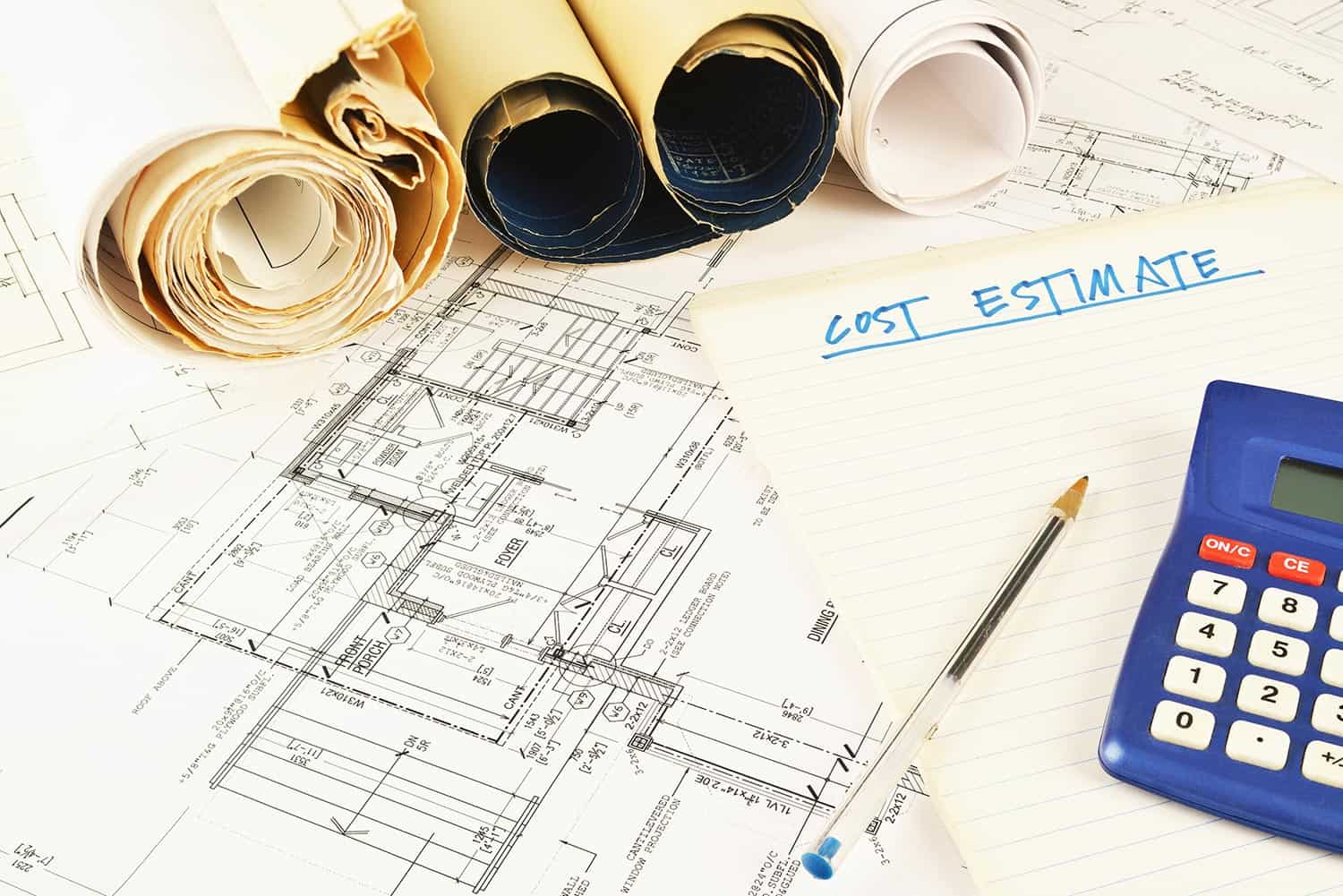
This refers to the initial and long-term costs related to the purchase, installation, upkeep, and repair of the chosen material.
Poured concrete is generally more affordable than pavers. You would have to pay up to 15% more if you'll choose pavers. The complexity of the installation process also adds to the higher price.
However, upgrading to stamped concrete and glossy finish would increase its cost so the two materials would be even at this point.
Besides, when you consider the long-term costs of maintenance and repairs, you would spend more on concrete slabs than pavers. This is because you can easily replace the specific pavers that have been damaged whereas you might have to re-install a whole new slab when concrete pavement cracks.
Installation of a simple concrete pavement without stamping would cost around $14,000 for 1,000 square feet of hardscaping. Meanwhile, be prepared to spend about $15,000 for paver installation.
The Verdict
After considering the above factors, pavers are better than poured concrete for your hardscaping material. They are denser which gives them impressive compressive strength and makes them displace water effectively.
Although their upfront cost is slightly higher than simple poured concrete, they are more cost-effective since they are easy to repair and they add value to your home by enhancing the look of your outdoor space.
Final Thoughts
It's better to use pavers for your hardscaping needs to get more value out of your money.
To read more about related topics, you may visit the following links:

![Vibrant Red Paver Stone Path, Can You Spray Paver Sealer? [How To Apply It]](https://pavingplatform.com/wp-content/uploads/2022/04/Vibrant-Red-Paver-Stone-Path-600x400.jpg)
![Properly laid out red pavers for a garden, Can You Tint Paver Sealer? [And How To]](https://pavingplatform.com/wp-content/uploads/2022/04/Properly-laid-out-red-pavers-for-a-garden-600x400.jpg)
